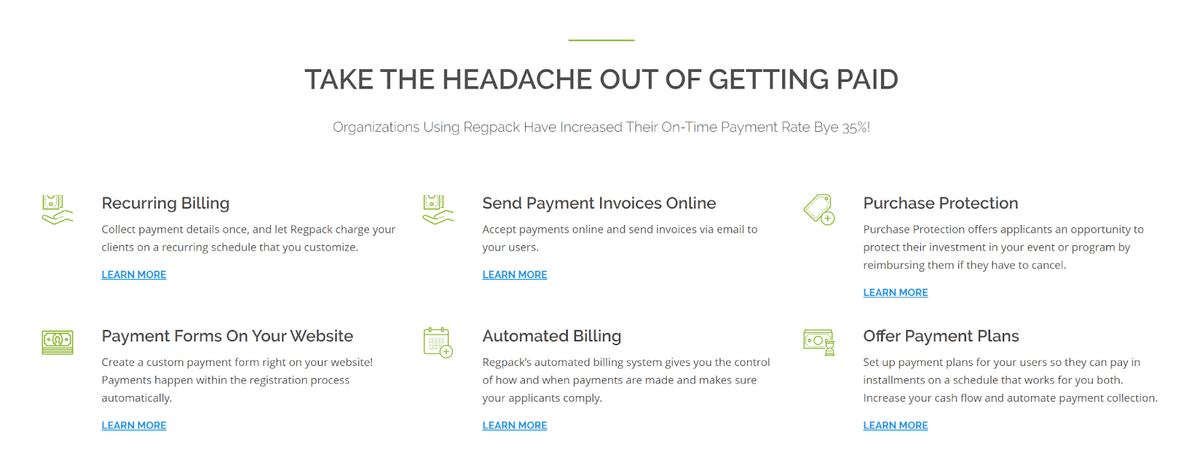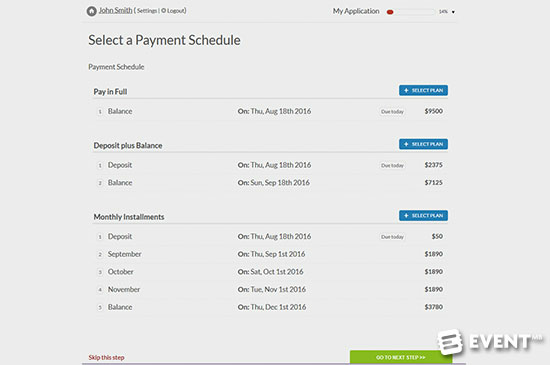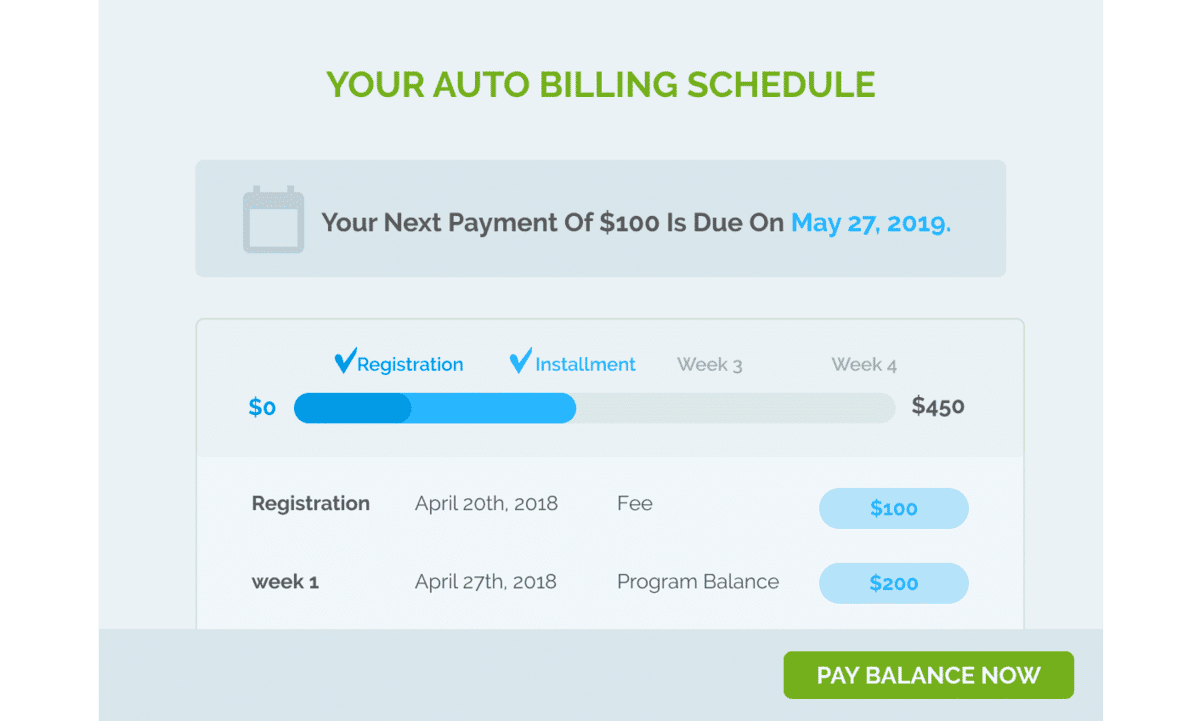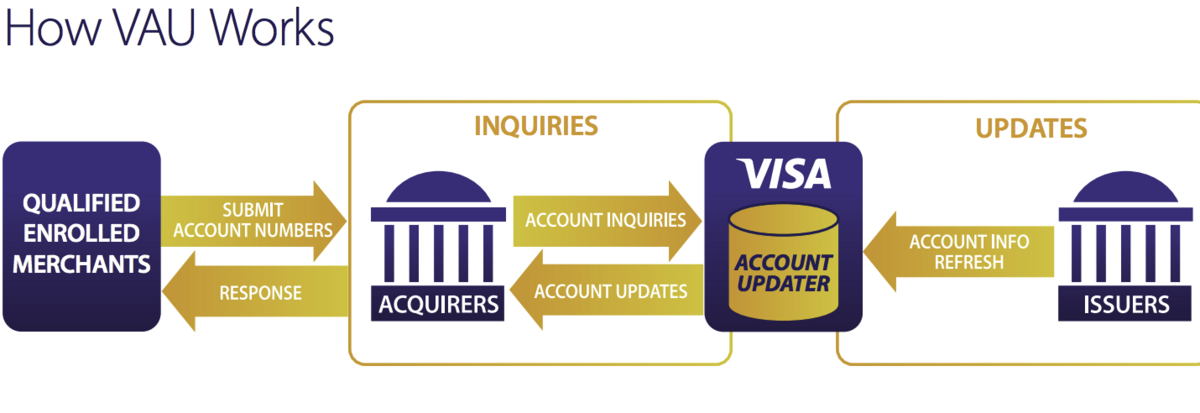For service-based businesses, recurring billing is about as trendy as snacks in the office or TikTok advertising campaigns.
But that doesn’t mean it’s time to skip arm-in-arm with your accounting team towards this fancy customer payment model.
Sure, it has a potentially high ROI, but you should still do your due diligence to make sure it’s right for your business and worth the effort it takes to implement it.
Read on to learn the four most pressing considerations to take into account when evaluating recurring billing as your business’s next big project.
- Your Service Needs to Accommodate Recurring Billing
- Investing in Recurring Billing Software Is a Must
- Customers Will Need to Be Invoiced on a Recurring Basis
- You Will Need to Manage the Risk of Involuntary Churn
- Conclusion
Your Service Needs to Accommodate Recurring Billing
Although recurring billing offers some serious advantages, it’s not always going to be the right payment strategy for your business.
Not all services work well with the recurring billing model.
For instance, a business like house painting that offers a one-time service at a low-to-medium price probably won’t use a recurring billing model.
They’re instead charging customers flat fees via one-time payments, as this is the easiest method for most customers and generates a fast injection of cash to the painting business.
Further, for this painter, there’s no real point in making it a subscription service because most customers probably won’t get another paint job for at least 5-10 years.
Recurring billing just isn’t a good fit for this business right now.
Therefore, before you switch to recurring billing, you should consider whether your business, as it stands, works well with this payment strategy.
We have written an article on five signs you need a recurring billing system to help determine if it’s time for a switch, and here are some business types that often use recurring billing:
| High-priced services like schooling that customers want to pay for over the long term. |
| Subscription-based services like Amazon, Hulu, or magazines. |
| Membership services like Costco, ClassPass, or Masterclass. |
| Software-as-a-service platforms that charge monthly or annually. |
If you make the mistake of adopting recurring billing when it’s not right for your business, you’ll probably end up creating a sub-par customer experience, which is the opposite of what you’re trying to do.
Nevertheless, if you do find that your current business doesn’t work well with recurring payments, that’s not to say you can’t turn it into one that does.
With a bit of creativity, you might be able to modify a service to fit the recurring billing model, or even add an entirely new subscription service to your business.
For example, perhaps the owner of the painting company from the above example knows from their time in the industry that there’s a whole segment of homeowners who want their houses to look freshly painted at all times, but don’t want to always pay for an entirely new paint job.
To satisfy this need, the painter could then create a subscription service for bi-annual touch-up paint jobs that take around four hours and are charged $500 per year.
By adding this subscription plan, they’ve effectively added a service that works well with recurring billing.
As a reward, they earn more revenue and have created a way to stay close to clients, thereby setting themselves up to receive business from them should they have a larger project in mind.
Investing in Recurring Billing Software Is a Must
Switching to recurring billing is often a time-consuming and resource-intensive process. Without the right recurring billing software, businesses will have a difficult time handling it.
Make sure you do your research to find the recurring billing platform that’s right for your business and its billing needs.

Source: Regpack
Some factors to consider include the platform’s recurring billing features, pricing, and supported payment methods, languages, and currencies.
The last thing you want is to buy a tool that doesn’t accept the specific payment methods or support the languages that your customers most commonly use.
Also, look for a tool that caters to your specific industry or service type. This is important because billing needs differ from industry to industry, so the tools do as well.
A recurring billing tool for a financial services company will have much different feature sets than one designed for camp administrators and school program directors.
Another big factor is the ease of use. You want a tool that has an intuitive interface, helpful online tutorials and guides, and automations that are easy to set up.
Regpack is one such example of recurring billing software that prioritizes ease of use.
The tool makes it remarkably simple for users to set up recurring payment schedules that charge customers automatically.

Source: G2
With the tool, you can also build online checkout forms where customers can submit their payment information, opt-in for recurring payment, and choose from a menu of billing plans you’ve designed, as shown below:

Source: Regpack
Having a tool like this will make your transition to recurring billing painless.
And once you’ve set up your automations, the system will handle work like charging customers, sending payment confirmation emails, sending invoices, and other tasks that otherwise would have clogged up your schedule.
Customers Will Need to Be Invoiced on a Recurring Basis
Aside from automatically billing customers according to a recurring payment schedule, businesses will also need to invoice customers on a recurring basis, which is tedious to do manually.
It’s also a task that’s easy to forget, and it’s pretty susceptible to human error because of how many small details it requires.
You should therefore choose a recurring billing software that will automatically invoice your customers after charging them.
For example, with Regpack’s automated invoicing, you can configure the system to generate and send personalized invoices to customers via email right after they’ve made a payment.
Thanks to the system’s smart email templates, the email the customer receives will also be automatically personalized with the pieces of information that are tracked in the platform.
Customers can even go into their user portal and see the payments they’ve made so far to your business and the payments they have left to make:

Source: Regpack
When you use software that both auto-charges clients and sends them their invoices, you’ll have a lot more free time to engage in the more complex and creative aspects of your work.
You Will Need to Manage the Risk of Involuntary Churn
Involuntary churn is when a customer’s subscription is canceled accidentally, without the customer wanting to cancel it.
According to research from Forrester, the most common causes of involuntary churn include insufficient funds, credit card limits, and outdated credit card information.

Source: IR
Involuntary churn is a risk that comes with recurring billing, and it’s something that you’ll need to mitigate through appropriate subscription management tactics.
One important step to take is to create systems that regularly verify each of your customer’s payment information.
Consider using an account updater to do this automatically on a regular basis, such as Visa’s Account Updater:

Source: VIsa
This will help prevent involuntary churn caused by incorrect card expiration dates, security codes, and other details, which may change when customers get a new card.
You should also use billing software that offers automatic retries on declined payments.
This works by trying to charge the card or bank account a few days after its failure, and then once again after that.
The schedule of retries depends on the settings you’ve made in your system.
This helps reduce involuntary churn stemming from technical network errors or customers having insufficient funds, as they’ll have time to add money to their cards or fix the issue before the next attempt.
Lastly, it’s also critical that you leverage the payment data in your recurring billing platform to identify the primary causes of declined payments so that you can make a data-driven plan to remedy the issues.
Conclusion
Recurring billing is a payment strategy that subscription services adopt to generate predictable cash flow and reduce manual billing work.
Typically, companies use recurring billing software to manage this style of billing and to automate associated tasks like sending invoices.
Recurring billing does pose some challenges for businesses that you should work to prevent or mitigate should you choose to make the switch, but, when implemented correctly, it offers many benefits.


















